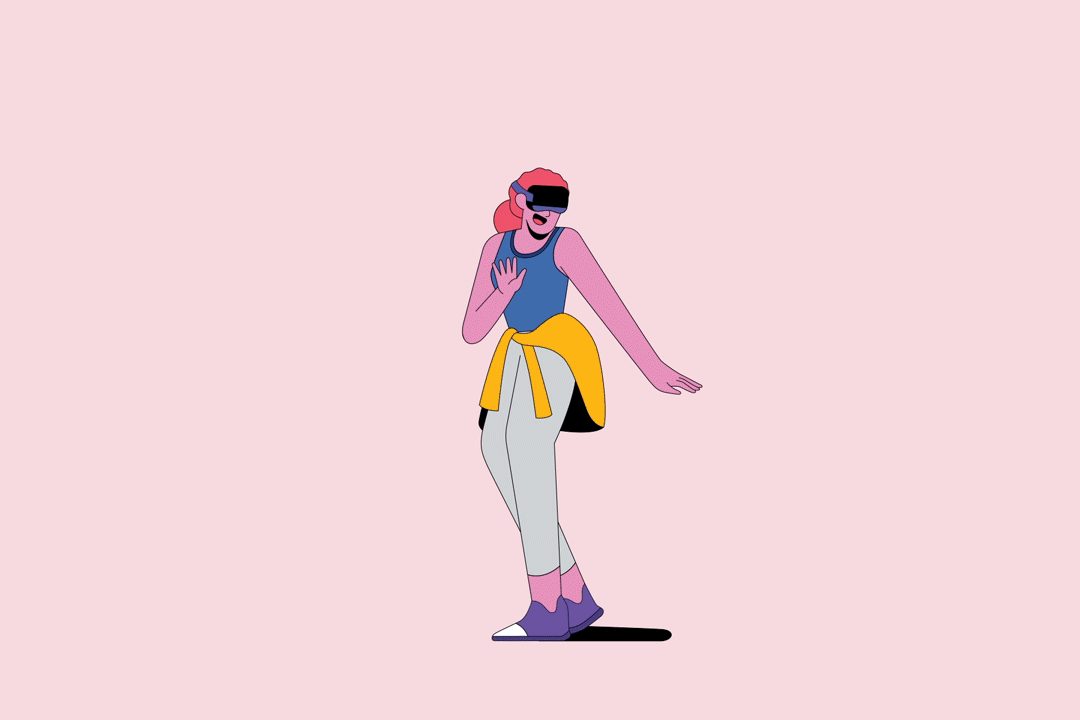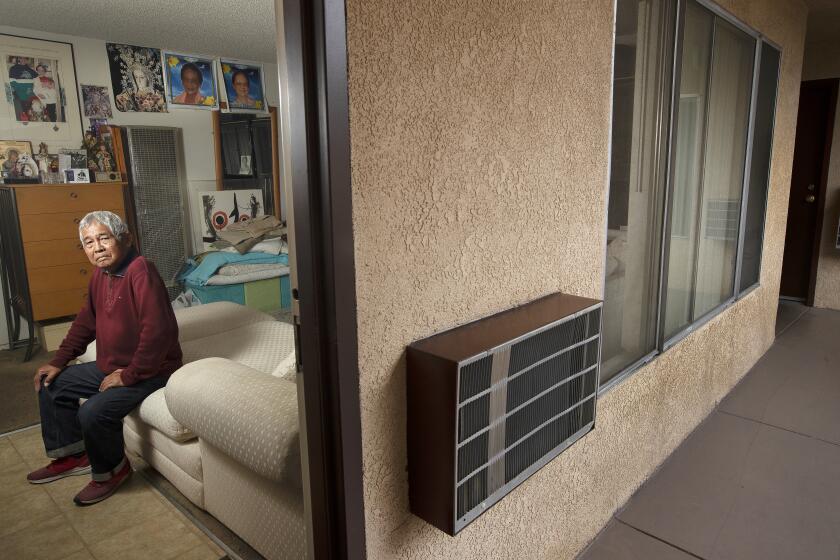We are inside Keith Tolch’s brain. As in, walking around.
It’s a futuristic landscape, a maze of empty rooms with soaring ceilings and glowing, neon-lit floors, everything bathed in an ‘80s-era palette of screaming-pink, orange and lime green. Random objects — a deconstructed 1967 Mustang, glass cubes brimming with swirly paint markings, delicate pencil drawings of butterflies and roosters — float by.
But, wait. Disrobed of the plastic, padded headset, we are actually in a gleaming Eagle Rock warehouse, a former auto body repair shop-turned-artists’ studio, and Tolch is perched behind a computer console, beaming.
His piece, “Glass Bottom Brain,” is an interactive, virtual reality artwork — meaning viewers don a high-resolution headset and descend into an immersive, 3-D digital environment in which they can navigate through bits and pieces of Tolch’s subconscious. He created the piece with expensive state-of-the-art computer equipment, but Tolch didn’t invest a cent. The project was paid for, organized by and later exhibited by Art Reality Studio, a nonprofit organization that’s outfitting contemporary artists with VR technology toward pushing creative boundaries. It sees itself as an incubation lab for cutting-edge creativity and asks the question: “What if?”
“What happens when artists are given cutting-edge technology, no strings attached?,” says ARS co-founder Frank Masi. “We wanna see how far they’ll take it.”
Better VR headsets and experiences that respond to you are reasons to isolate inside virtual reality when COVID-19 is the reality outside your door.
The organization, which formed about 2½ years ago, is a later-in-life project from Masi, a 77-year-old photographer and retired theme park attraction project director and Brent Imai, a 61-year-old former sports television executive and entrepreneur.
“Technology is such an important part of society,” says Imai. “It can be really, really good, it can be really, really bad. We thought: ‘Let’s have artists weigh in on that discussion.’”
Virtual reality technology has been around for decades and frequently pops up in video games, at theme parks and in other “experiential entertainment,” often located at malls. Fine artists have been slower to adopt the technology, which is expensive and can be daunting to learn how to use for those who aren’t computer-savvy. But that’s started to change.
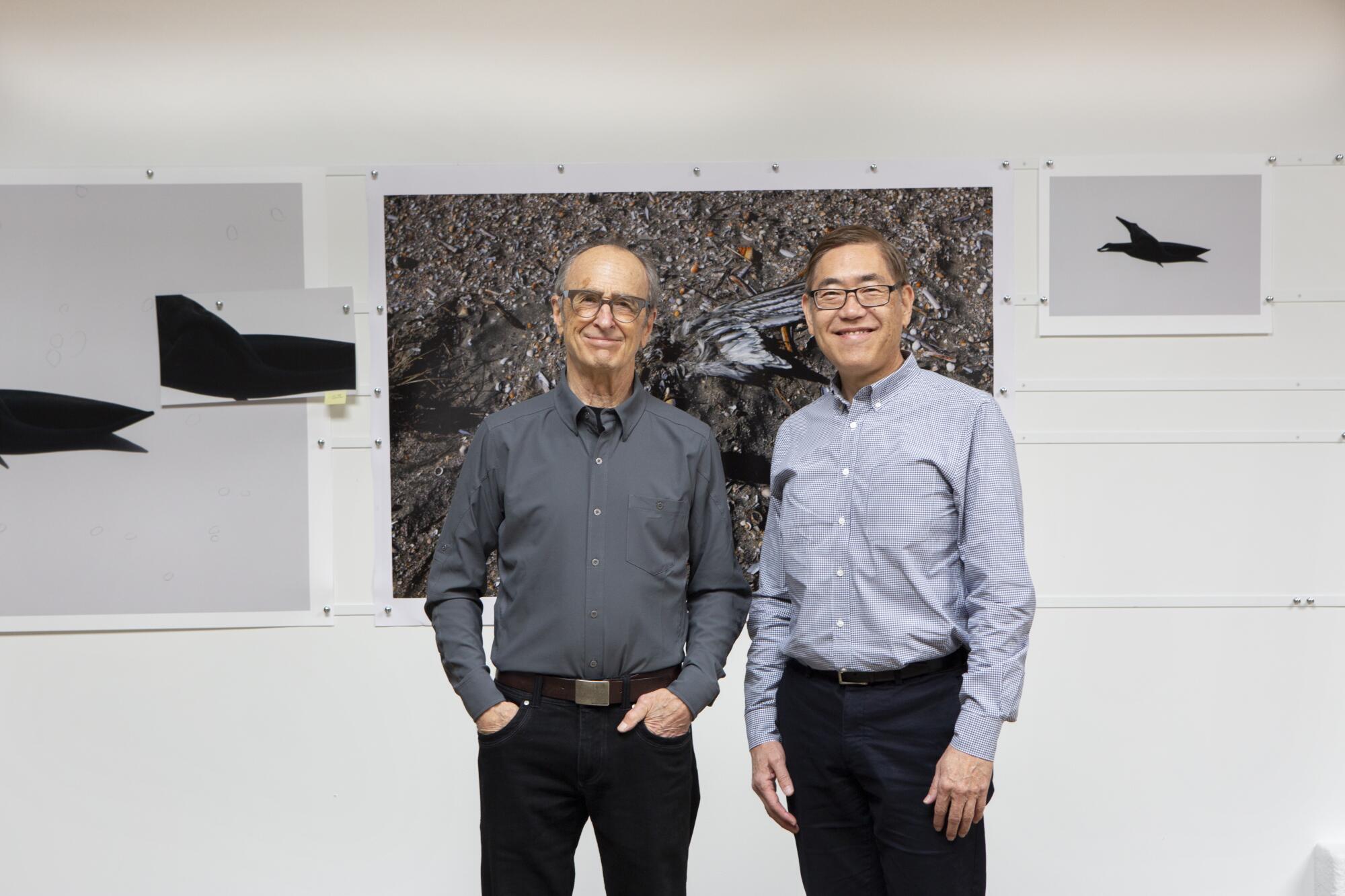
Artists Paul McCarthy, Jordan Wolfson and Jon Rafman showed VR works in the 2017 Venice Biennale, 2017 Whitney Biennial and 2016 Berlin Biennale, respectively; Laurie Anderson and Taiwanese new media artist Hsin-Chien Huang showed new VR installations during the Cannes Film Festival in May.
Heat around VR has caught on in the museum world: former Moderna Museet director Daniel Birnbaum left his job at the Stockholm institution last year to head up the London-based art and tech studio Acute Art, which has created VR works with Jeff Koons and Marina Abramovic. Even in the public art realm, L.A. artist Nancy Baker Cahill displayed VR works on digital billboards along Sunset Boulevard in 2018.
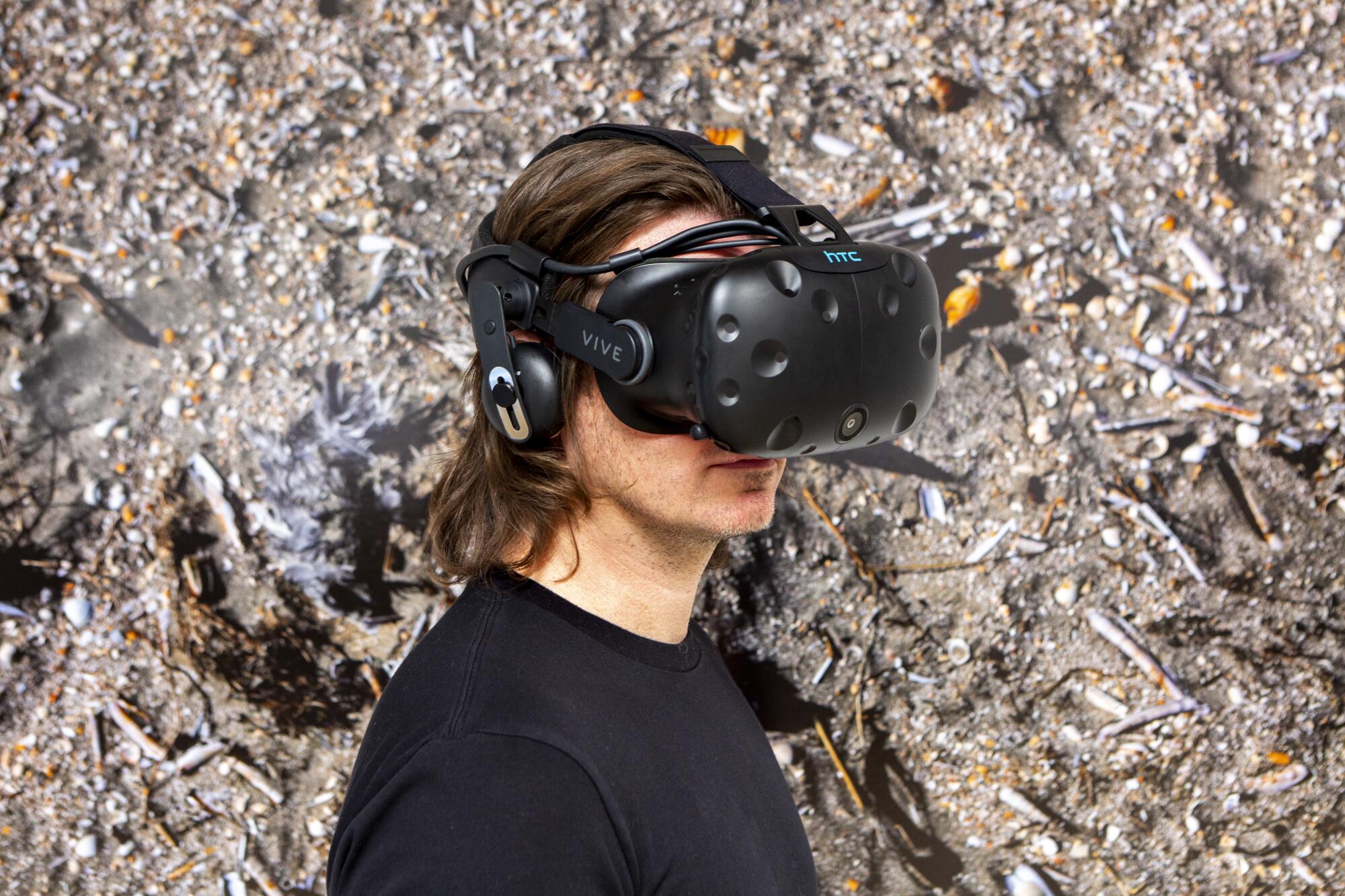
And during the coronavirus outbreak, as culture hubs are shuttered and hungry art lovers shelter at home, virtual reality art-viewing at museums — and art-buying at galleries — has taken off.
Virtual reality, however, is still a mystery to much of the contemporary art establishment and there’s still a slew of unanswered questions about how to exhibit, collect and monetize VR art. Is there a collecting market for it? How do you price the works? How would collectors display VR works in their homes? Are the works originals or part of a limited edition? What’s to prevent someone from reproducing or reselling a work made with software and code as opposed to paint and canvas? And, finally: What makes it art as opposed to computer programming?
LACMA curator Britt Salvesen, who organized the museum’s “3D: Double Vision” exhibition last year, questions the longevity of VR artworks: “How do you preserve, refresh and sustain such works when the hardware and software is inevitably always changing? And if you bought a VR work now, would you be able to watch it in 2025 — would the systems still work?”
Masi and Imai hope, if not to answer all of these questions, then to wade around in them for a while. The two met about four years ago at a Los Angeles County Museum of Art patron group event before hatching the idea for ARS. Their business model is not unlike that of the L.A.-based artists’ workshop and fine art lithography publisher Gemini G.E.L., which beginning in the 1960s and ’70s facilitated experimentation among artists, exhibited and sold their work and helped fuel a nationwide printmaking revival in the process.
Instead of ink, paper and steel presses, however, ARS provides artists with VR “rigs” — high-end computers outfitted with VR software, display monitors, headsets, wall sensors and remotes — which run about $10,000 apiece. And ARS — which hasn’t sold anything yet and is funded by Masi and Imai (but for one equipment donation valuing $5,000) — says it doesn’t intend to take a cut of sales of the works, which are creator-owned.
“It’s really a philanthropic thing for us,” Imai says. “I gave a little bit of money to [local museums] but I realized: They don’t really need my little money, I’m not Eli Broad that can really make a difference. I wanted to do something that was more direct, with the artists.”
ARS loans the VR rigs to its artists, who keep them at their homes or studios for as long as they need to finish the work; Tolch kept his more than a year while teaching himself to use the game engine software through online tutorials. ARS then displays the new VR work at its studio, or it facilitates an exhibition at a gallery or another art space.
Tolch showed his VR work, which combines still photography, 3-D modeling, screenshots, animation and images of his paintings, at ARS in February 2019; the piece was exhibited alongside his large-scale oils on canvas, figurative abstraction works he says are “about painting,” if somewhat impersonal. The VR work, with its amalgam of sourced imagery, allowed him to go deeper, to “explore my identity and my heritage that I’m not really clear on,” he says.
“It’s an architectural, biological environment that you can walk around in and look at all these artifacts from my past: photos of my grandfather, pencil drawings my great-grandma did. There are voices. It’s almost like a storehouse of things that I know and I remember.”
It’s part painting, part filmmaking, part sculpture, part collage, part performance, part sound, part animation. It’s the closest tool that I’ve experienced that matches my imagination.
— Artist Joe Sola
Joe Sola spent over a year conceptualizing and sketching his VR piece, “Changing Room,” before figuring out the technology with artist-animator Filip Kostic. The work debuted at Honor Fraser gallery in Culver City in January alongside Sola’s enormous gold-hued pigment prints. At the opening, visitors waited in line up to 30 minutes to don a headset and descend into Sola’s animated VR world, which explores violence, sexuality and race in popular culture, with O.J. Simpson as the viewer’s co-pilot.
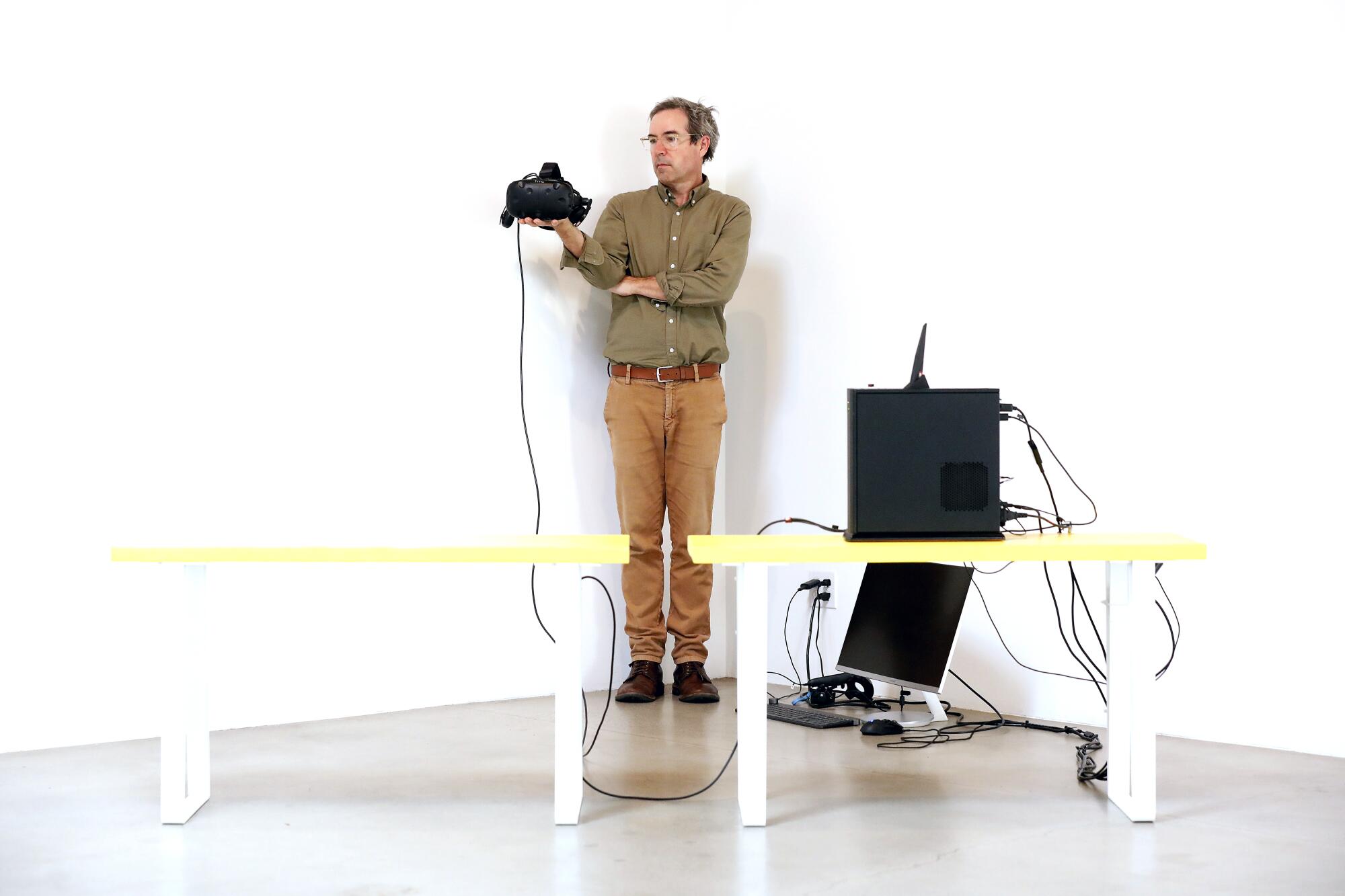
The naked swordsman depicted in the Academy Award gets a digital once-over as Narcissus in new Joe Sola work on view.
During the reception, VR explorers took turns interacting with the piece in the corner of the gallery, which added a performance art element to the room. Passersby gawked as headset-clad VR participants, blind to their real-world surroundings, jerked their bodies around awkwardly, groping at imaginary objects in the air.
“It’s part painting, part filmmaking, part sculpture, part collage, part performance, part sound, part animation,” Sola says of VR. “It’s the closest tool that I’ve experienced that matches my imagination.”
How to sell the works, however, is still being finessed, Masi says. Tolch’s piece is an edition of five; Sola’s, of three. The artist and studio each keep a copy as well. An artist’s proof from each edition will be donated to a museum or cultural institution; the first collector to buy a work from an edition will get to name the recipient, Masi says.
“The idea is for it to be someplace where it’s good for the artists’ work to be seen,” he says. “So museums is what we’re pushing.”
Acute Art’s Birnbaum says that the question of how to edition and distribute VR work is still very much up in the air. While small editions might be suitable for some works, his company — which hasn’t commercialized any VR art yet — is focused instead on exhibition models and the “democratizing potential” of the medium.
Earlier this year it produced a VR video by Chinese artist Ai Weiwei. The piece, addressing migration and animal rights, launched on the Guardian’s YouTube channel Jan. 30 and got about 100,000 views its first day — but the work isn’t for sale.
“We haven’t found the model yet to sell these works,” Birnbaum says. “It seems it should be art for everyone and it should be distributed in large editions, like Netflix. But it’s unclear where it will sit in the art market and in the institutional context.”
But are the works art?
“My litmus test,” Baker Cahill says, “is how much conceptual rigor has gone into it — why are you even using this medium, why VR and not painting or sculpture or immersive theater?”
ARS has two VR pieces in the works with L.A. artist Brian Bress and San Diego-based Victoria Fu. Both pieces aim to explore the medium, conceptually.
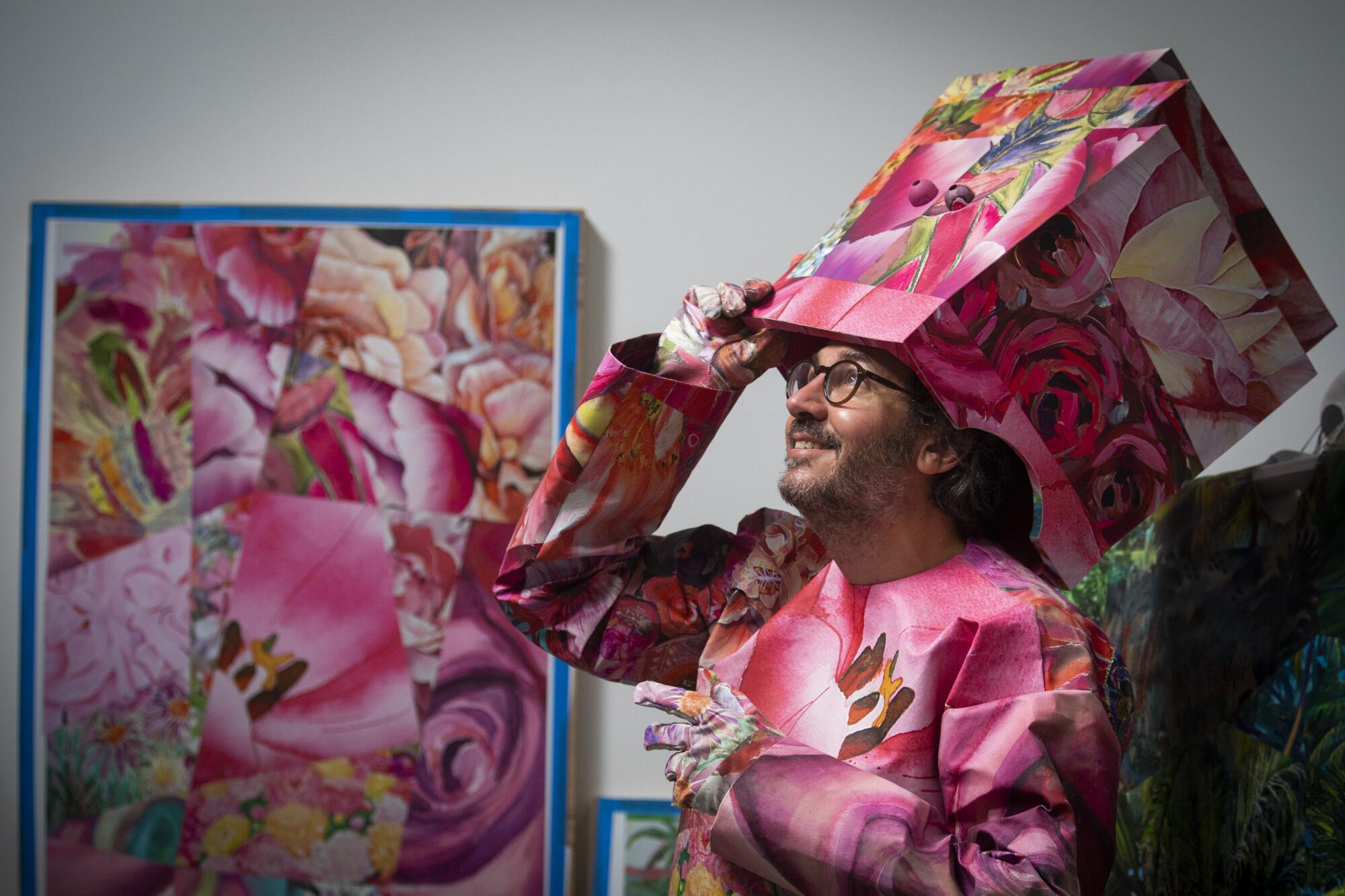
Bress has spent the last decade making screen-based work involving costumes, sets and his own art-making performances — all of which he turns into wall-mounted video installations. His VR piece will place viewers “in a virtual art-making space,” he says, “where they can slice and dice a canvas to create portals to other spaces that have more imagery inside of them.”
Fu, whose work appears in the collections of LACMA and the Whitney Museum of American Art, says her VR piece will transport viewers to a domestic interior and address consumer lifestyle desires while also playing with the 3-D space.
“My video installations address how viewers situate themselves in narrative space,” she says of previous work. “This, VR, is a whole other step. It’s definitely foreign to me, an experiment.”
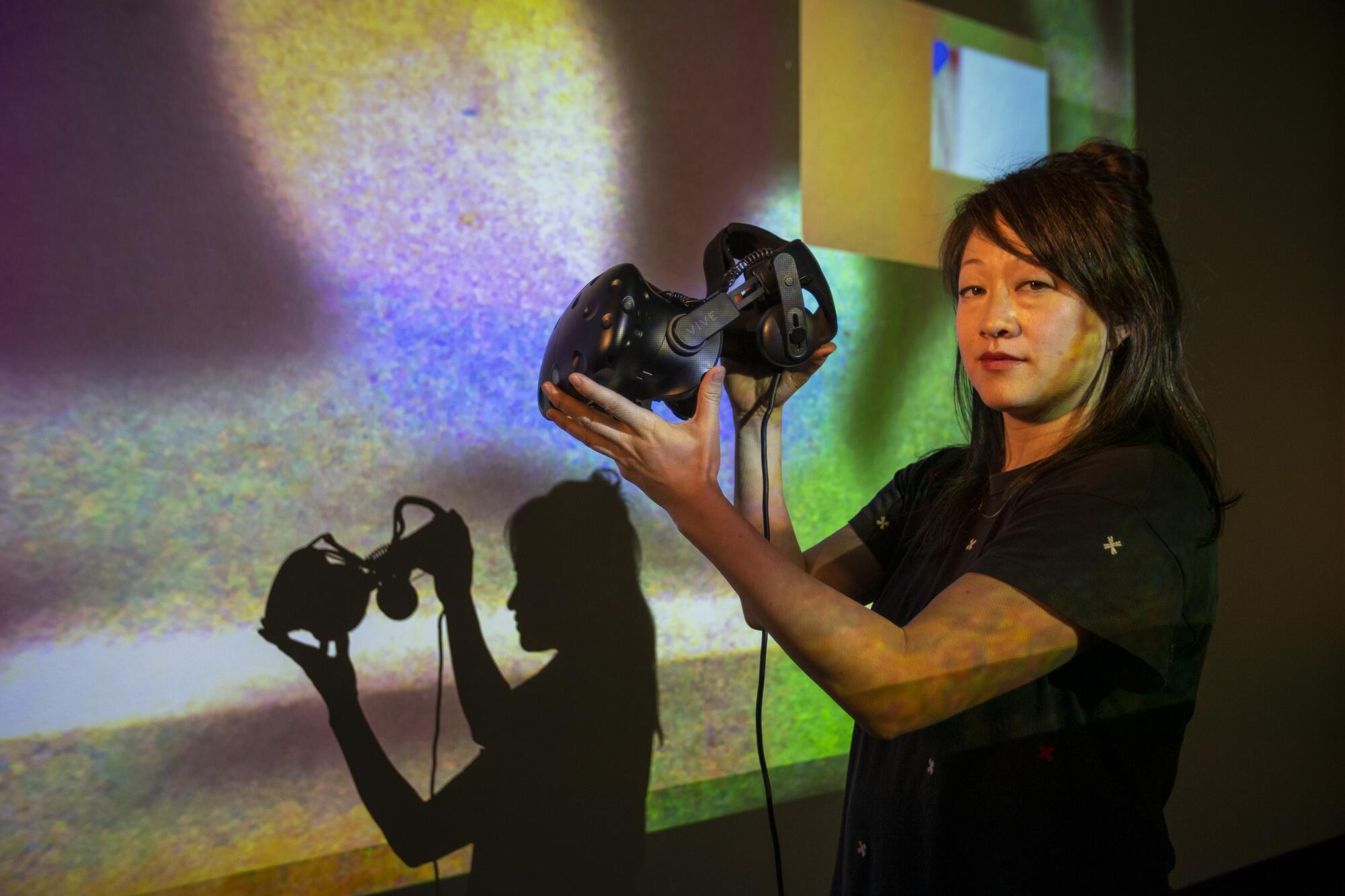
This early gestation stage of the experiment is especially exciting, Imai says, “waiting to see what comes out.”
“Giving these tools to artists can give us a look into the future,” he says. “Maybe it’s a cautionary tale, maybe it’s a beautiful world.”
81-year-old Ben Barcelona is L.A.’s most devoted museum-goer. But what happens when the coronavirus shutters culture in California?
More to Read
The biggest entertainment stories
Get our big stories about Hollywood, film, television, music, arts, culture and more right in your inbox as soon as they publish.
You may occasionally receive promotional content from the Los Angeles Times.
